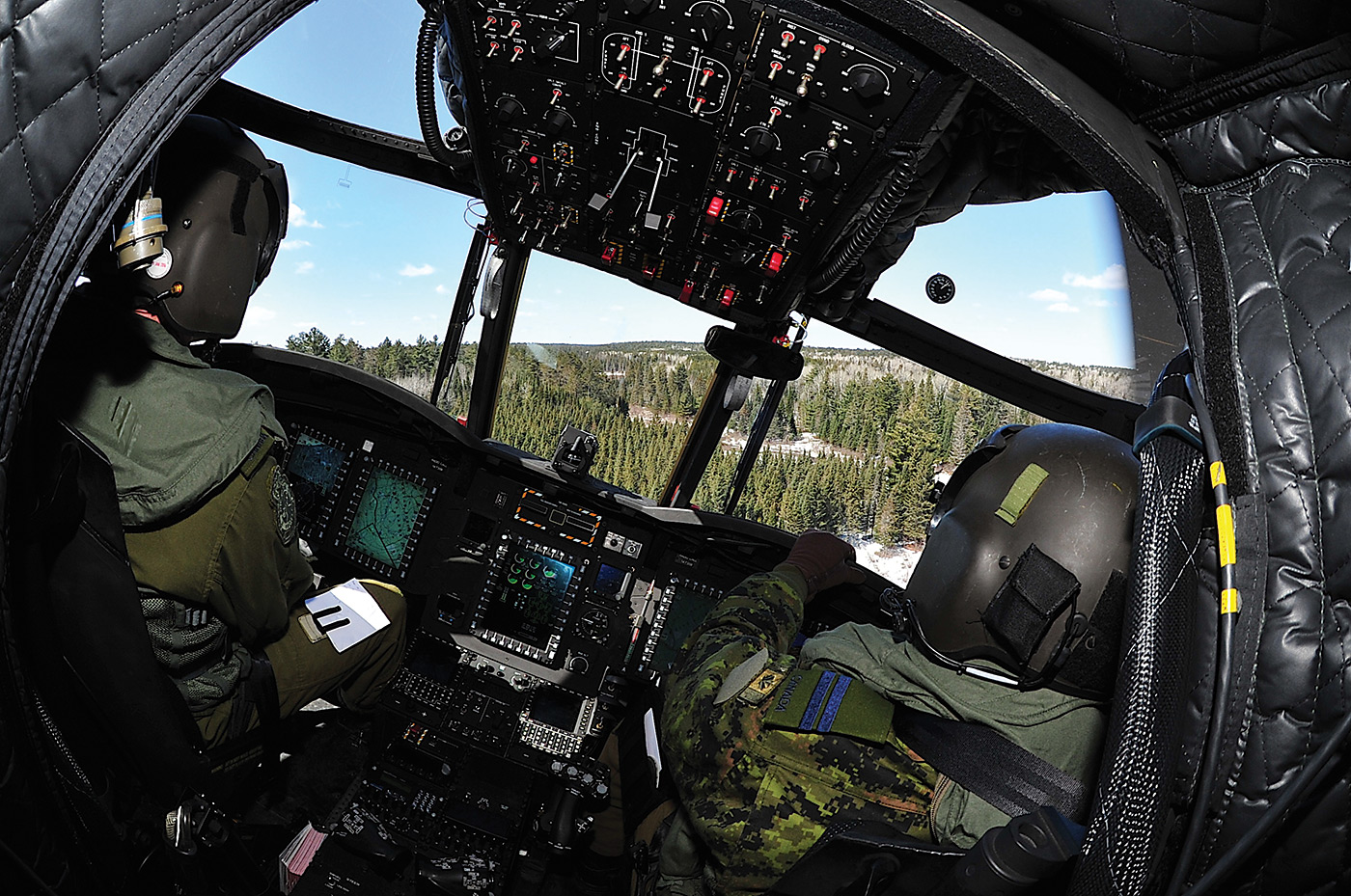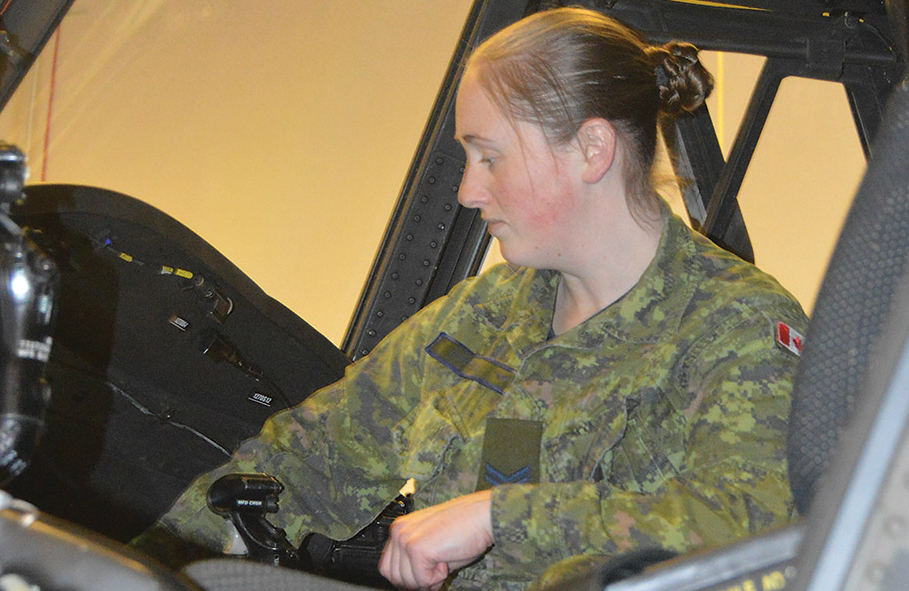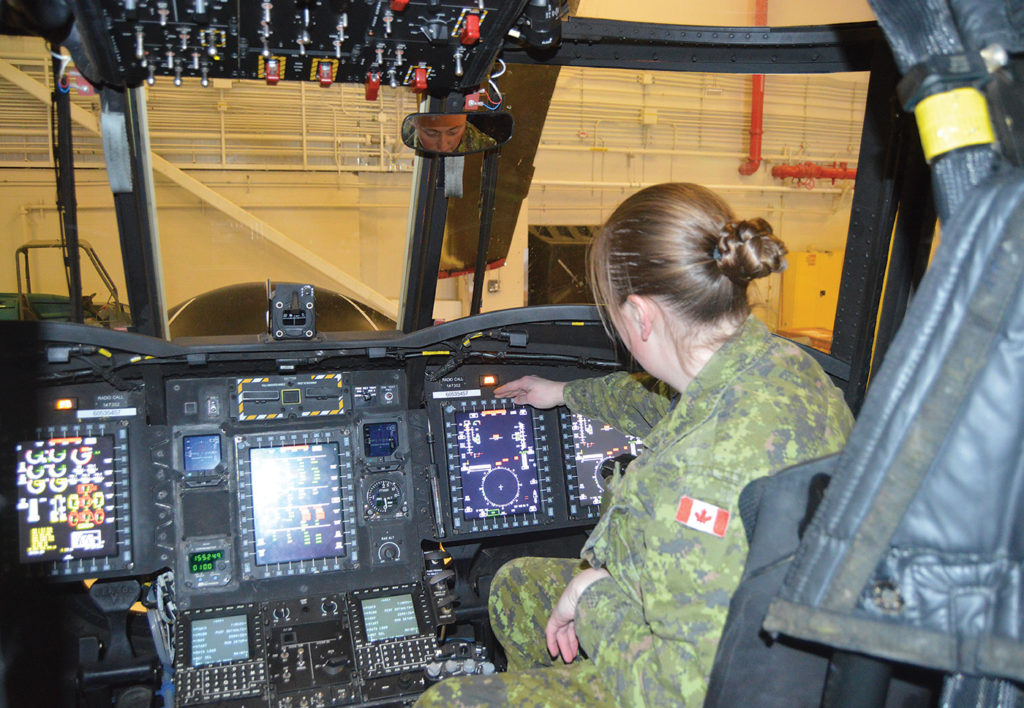Estimated reading time 8 minutes, 16 seconds.
There is a long-running joke to the effect that any helicopter is fundamentally a collection of vibrating parts all trying to fly in the same direction. Turbines are inherently smoother than piston engines, but there’s no escaping vibration, something original equipment manufacturers have invested vast sums trying to address over the years.

As for the parts themselves, there are clearly a lot and, in the case of the 15 Boeing CH-147F Chinooks flown by the Royal Canadian Air Force (RCAF), they number well into the tens of thousands. Some parts are obviously huge in an aircraft with a maximum gross weight of 24,494 kilograms, but flying it depends on the myriad small parts.
The multi-mission Chinooks have an extensively upgraded electrical system that provides additional power and redundancy, while a fully integrated Common Avionics Architecture System cockpit and Digital Automatic Flight Control System reduce pilot workload and provide greater situational awareness. The aircraft also has an advanced Aircraft Survivability Equipment suite that includes a Directional Infrared Countermeasures system for increased crew safety in a wide range of threat environments.
Among the newest additions to the RCAF fleet, the Chinooks have been deployed mainly within North America since delivery by Boeing in 2013 and 2014. Prior to the deployment of two Chinooks, with four Bell CH-146 Griffon armed escorts, as part of the ongoing United Nations peacekeeping mission in Mali, the RCAF’s only overseas Chinook operation was in July 2017 when one was transported in a Boeing CC-177 Globemaster to the Royal International Air Tattoo in England, the world’s largest military air show, in support of the Royal Air Force Charitable Trust. The mission also included joint training and a flight with an RAF H2 Chinook to France for a fly-by of the Vimy Memorial.
RCAF deputy commander MGen Tammy Harris said it showcased “the RCAF’s ability to provide agile, strategic airlift of essential assets anywhere in the world, demonstrating our strategic reach to support operations … in Canada or abroad.”

That’s proving to be the case, but sustaining operability is especially challenging in conditions that can range from the tropics and the desert to the intense cold of the High Arctic. It’s a challenge Cpl Taylor Hartnell is up for. A member of the 450 Tactical Helicopter Squadron maintenance team at Canadian Forces Base Petawawa, Ont., the avionics technician was clearly enthusiastic during an RCAF Today visit.
“I fix different things,” said Hartnell, picking up a cyclic stick from the workbench in a space she usually shares with another technician in the sprawling facility. “We do a lot of things you can’t possibly do while they’re on the aircraft. Different boxes from the aircraft are sent back here, so we fix them and send them back outside.”
She was simplifying a career in which there is “not really” a typical day in maintaining optimum readiness. “There are so many aircraft and so many people on the crews. If something does break and the helicopter’s going to be down for a while, the days will vary, depending on what’s going on, the priorities. It’s up and down. Sometimes they’re doing night flying.”
Hartnell hadn’t thought of an RCAF career until after the birth of her daughter. She previously had focused on silversmithing, which she still enjoys as a hobby, but decided that she really needed stable employment. “The military kind of grabbed my eye.”
So, both eyes grabbed, the Petawawa native did basic training at Royal Military College Saint-Jean in Quebec before being sent to other bases for increasingly specialized training, and then assigned to 450 Squadron for three months of intensive hands-on work with Chinooks which, after four years, have become “my bird.”
Hartnell agreed that her eye for detail and familiarity with such things as soldering, coming from her jewellery work, had helped her gravitate to electronics, in general, and avionics, in particular. It has become increasingly critical in an era of glass cockpits where complex underlying circuitry and technology simplify aircrew operations.
While having “nice shiny screens instead of mechanical dials” doesn’t require lengthy additional technical training, she said that “any time we get a new system, it usually comes to the back shelves first.” Typical is the Chinook’s countermeasures defence system buckets, which house components, including flares and chaff dispensers designed to confuse incoming missiles.
Hartnell and three other technicians spend three to four days installing and testing the countermeasures and the electronics warfare suite at the front of the Chinooks. That said, “it’s kind of become my baby, because I’ve done so much of it. There are five components squished into one. The newest we were testing involved five months on every aircraft. Any time we get a new system, it usually comes to the back first … We have a little course to learn how each piece works and then we install it on the aircraft and test all aspects.”

Some jobs are bigger than others. The avionics shop usually has just Hartnell and one colleague on duty. But “when we have a big project, we’ll take one or two guys from services to enable us to handle the work.” Boeing had several technicians, mostly RCAF retirees, on site in the early stages of the Chinook program, but they now are called in only when an upgrade is being done. Otherwise, it’s strictly up to the avionics and services personnel, a challenge they relish.
Maintenance isn’t relegated to the shops and hangars; in-flight diagnostics are a critical element. “Depending on what system isn’t working, we’ll be there to verify what’s changed. We try to catch them before they leave servicing to see what they’re displaying. Occasionally, something silly will happen.”
She recounted ferrying an investigation team to the RCAF base in Cold Lake, Alta., in November 2016 after a Boeing CF-188 had crashed on the Saskatchewan side of the Cold Lake Air Weapons Range during a practice weapons drop. “One of the FEs (flight engineers) asked me what would happen if our GPS system got zeroized.”
The Global Positioning System receiver on RCAF aircraft, which can be deployed into a combat zone, have a zeroize toggle. Protected by a guard to prevent accidental activation, it is used to erase any stored cryptographic and/or navigational data to prevent it from falling into enemy hands.
“Zeroize? I asked ‘why would you do that?’ ” said Hartnell. It probably was one of those situations on an otherwise routine flight when the aircrew were chatting about “what if” scenarios they might encounter. She told the FE the solution was to reboot the GPS, a simple solution to what seemed a “silly” but nonetheless serious question. “But major problems? We usually figure them out on the ground.”
A key aspect of maintaining aircraft and crew operability is daily training flights, some of which take them over the National Capital Region, where the distinctive rotor thump tends to attract attention. Then there are particularly memorable flights such as ferrying a group of dignitaries to The Citadelle, the official residence in Quebec City for the Queen and the Governor General. “That was pretty cool,” said Hartnell, one of two technicians on the flight to what is the oldest active military facility in Canada, on the Cap Diamant escarpment above the St. Lawrence River. She recalled graphically how small the quadrangle seemed during a couple of orbits prior to landing but said it’s all part of an interesting job.
In a markedly different way, so too is dealing with the complex electrical systems in the Chinooks. Their internal supply is 28-volt sealed lead-acid batteries but even those can pack a wallop by themselves. However, the risk increases when aircraft are hooked up to huge external power supplies in the service bays. Hence the warnings on manuals and hardware about turning off or disconnecting batteries before any work begins.
“We’ve had a few incidences of ‘frying’,” said Hartnell. In one case, one of the two main electrical distribution panels from a supplier displayed “a lot of weird stuff” when it was turned on. “So we turned it off. But when we turned it back on, sparks were everywhere!”
Hopefully no sparks were flying in Mali, where a “theatre activation team” was deployed in June to prepare for the arrival in July of more personnel and equipment. When the operation begins, one escorted Chinook will be flying at any given time as the other crew rests and their aircraft is checked out. Hartnell said that “sorting out any problems” under those conditions “will be a great learning experience” for whomever is deployed.
At the time RCAF Today visited Petawawa, details were still being sorted out but, as she put it, “everyone is willing to go wherever the government wants to send them. [I]t’s a whole-team approach, no matter what. If the mechanics are having a hard time, we’re always there to help; if we’re having a hard time here, there’s always someone there to help. We do become quite a tight-knit family.

Hi, thanks for this meaningful article. Avionics engineering is really a great and the highest paying field. Avionics engineers design, develop and maintain the aircraft. Women can also apply for aviation courses after 10+2 like men an make their career brighter in this field.
Thanks kindly. With all our focus on machines and technology (guilty!), we have a tendency to forget the human facrtor. Cheers.